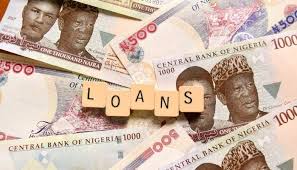The Federal Government plans to borrow ₦8.54 trillion by 2025, which is also less than the ₦10.62 trillion targeted for the same year in the previous MTEF/FSP.

A breakdown for 2025 showed that the Federal Government plans to get ₦6.42 trillion from domestic lenders and ₦2.12 trillion from foreign creditors.
The Federal Government plans to borrow ₦10.07 trillion by 2026, which consists of ₦8.94 trillion domestic loan and ₦1.13 trillion external debt.
This could also be as a result of the credit status of the Federal Government which has a huge debt profile.
As a result, the Federal Government is reducing its appetite for foreign loan to focus more on borrowing from domestic lenders.
Increase In Public Debt
The country had borrowed about ₦5.05 trillion between January and June from its ₦9.62 trillion borrowing plan for 2023, which means that the Federal Government will likely still borrow at least ₦4.57 trillion more this year.
The Debt Management Office recently said Nigeria’s total public debt hit ₦87.38 trillion at the end of the second quarter.
The figure represents an increase of 75.29% or ₦37.53 trillion compared to ₦49.85 trillion recorded at the end of March 2023.
Basically, the increase was primarily due to the ₦22.7 trillion Ways and Means Advances of the Central Bank of Nigeria to the Federal Government and the Naira devaluation that added about ₦13.38tn to the external debt figure.
Also Read: Nigeria To Get ₦728b EU Loans, Grants
With an ₦87.38 trillion debt as of June 2023, the likelihood of ₦4.57 trillion new debt before the end of this year, and a plan to borrow ₦26.42 trillion in three years, Nigeria’s total public debt is expected to hit and even exceed (due to subnational borrowing) ₦118.37 trillion by the end of 2026.
Despite the rising debt, the Federal Government has insisted that it will stick to its borrowing plan.
See Why South Africa May Beat Nigeria As Africa’s Biggest Economy

